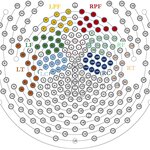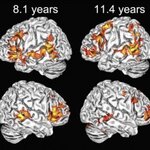Neuroscience

A deficiency in Vitamin D on the mother's side could explain why Autism Spectrum Disorder diagnoses are three times more common in boys, but don't start buying supplements. This was in rats and rats are not little people, there is a lot of ground to cover before this has human relevance.
Low vitamin D in mothers is one of the many risk factors linked to Autism Spectrum Disorder, largely because it is a broad behavioral spectrum that has little scientific rigor in diagnoses, which means even less rigor in correlation. In the study, Professor Darryl Eyles and Dr. Asad Ali from University…

Every pharmacy has a section devoted to products that are not scientifically known to do anything at all, they could never pass FDA scrutiny on their claims, but they don't need to and pharmacies are in business to make money. And in places like Washington, DC, California, and New York, the public overwhelmingly believes in supplements as alternatives to medicine, so carrying fish oil, ginkgo, ginseng and other products that claim to be memory boosters and prevent "cognitive decline" is just listening to the market.
Yet a new study does find that one popular unvalidated supplement, melatonin…

If you're a music lover, you've likely had that feeling where a favorite song floods your system with pleasurable emotions, joyful memories, makes your hair stand on edge, or even sends a shiver or "chill" down your spine.
About half of people report that they get such chills when listening to music.
EEG is a non-invasive, highly accurate technique that scans for electrical currents caused by brain activity using sensors placed across the surface of the scalp. When experiencing musical chills, low frequency electrical signals called "theta activity" -- a type of activity associated…

Children learn languages much easier than adults, and also seem to recover from neural injuries better. The reason may be that adults process most discrete neural tasks in specific areas in one or the other of their brain's two hemispheres, while kids use both the right and left hemispheres to do the same task.
A recent study focused on one task, language, and finds that to understand language (more specifically, processing spoken sentences), children use both hemispheres. If so, use of both hemispheres may provide the mechanism to compensate after a neural injury. For example, if the left…

Compared to cisgender people (gender identity corresponds to their sex), an analysis of over 600,000 adults finds transgender and gender-diverse adults are three to six times more likely to be diagnosed as autistic.
The findings are simply exploratory and about co-occurrence between gender identity and autism diagnoses, they cannot inform or suggest causal links. These correlations have confounders.
The team used five different datasets, including a dataset of over 500,000 individuals collected as a part of the Channel 4 documentary "Are you autistic?". In these datasets,…

When we talk about sight or hearing, the mechanisms that lead us to distinguish two colors or two notes have been well-established and translated into practical use. For example, we know which wavelength will appear red and which frequency will make us hear a G note.
We have not made similar progress with smell; we are not able to say how a molecule smells just by looking at its chemical structure.
A new paper examines the brain processes involved in the continuous flow of information arriving from our sense of smell.
Some people have trained their thinking to understand the secret code…

Music training can make us well-rounded, it may change the way we think, and music is fun, but claims that it makes kids smarter may have hit a sour note.
Smart people often play musical instruments as well, so that has led to research trials seeking a causal link between music training and improved cognitive and academic performance, but they have reached conflicting conclusions. Some did suggest - a lot of bad epidemiology happens with that word so caution is warranted - that there may be a link between music training and better cognitive and academic performance. Others found no…

Music is in most aspects of our lives we probably don't even notice it - but it can be noticed in our brains.
A new study examined the brains of non-musicians, western classical musicians, and eastern classical musicians, as they were exposed to unfamiliar rhythms and non-rhythmic patterns. As you would expect, trained musicians have mastered auditory statistical learning, so they showed greater powers of rhythmic prediction compared to non-musicians, but what was intriguing were differences between those trained in Japanese and Western classical music.
Many Japanese performance arts,…

Emotions are an integral part of our lives. They influence our behavior, perceptions, and day-to-day decisions. The spontaneous amodal coding of emotions - independent of perceptual modalities like the physical characteristics of faces or voices - is easy for adults, but how does the same capacity develop in children?
Recent experiments using kids ages 5, 8 and 10 years sought to find out when children began to recognize happiness or anger depending on whether it is expressed by a voice or on a face.
A study compared the ability of children age to make a spontaneous link between a heard…

Ten years ago science journalists talked about functional MRI (fMRI) scans all of the time. Because if a part of the brain lit up when someone did, said, or read something, it went into a paper. Few asked who was doing the interpreting, how legitimate the scale was, and if it had any scientific relevance. We got media claims that fMRI would predict behavior and the resulting media attention caused scholars to rush to produce even more fMRI papers.
Yet the science is not clear on whether or not fMRI studies can achieve anything. It is contradictory. It has no known relevance to individuals.…